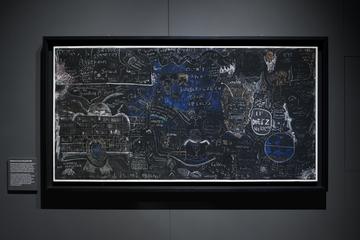
Martin Roček 1954
Martin Roček was born in Czechoslovakia, where his father Jan worked as a renowned chemist at the Czechoslovak Academy of Sciences. The family made a daring excape to the United States in 1960, after which Jan Roček became professor at the University of Illinois.
Martin grew to become a theoretical physicist, doing his undergraduate and doctoral degrees at Harvard University (1975 and 1979). He then became a postdoctoral fellow working with Stephen Hawking, both at Cambridge and Caltech. From 1983 onwards he has been professor at the State University of New York at Stony Brook.
In the late 1970s, Martin Roček was one among a new generation exploring theoretical frameworks unify the four fundamental forces of nature. At the time, the Standard Model of physics was succesfully unifying the small scale forces: strong, weak and electromagnetic. These forces obey the principles laid out by quantum mechanics. That is not yet the case with the fourth fundamental force, gravity, which is still best described by Einstein's General Relativity.
In the late 1970s, Roček was working on proposed new frameworks called Superspace and Supergravity, formalisms advanced by Daniel Z. Freedman, Sergio Ferrara, and Peter van Nieuwenhuizen. Roček was brought to Cambridge by Stephen Hawking to introduce the new, promising framework to his group and himself. As part of this process, Hawking and Roček organized one of the most influential conferences in this new field, the Nuffield Conference on Superspace and Supergravity in 1980. The proceedings were subsequently edited into a volume featuring on its cover a blackboard that had been filled with graffiti by the participants over the course of the conference.
In 1984, Martin Roček was invited to become professor at the State University of New York at Stony Brook, where foundational work on Superspace and Supergravity.